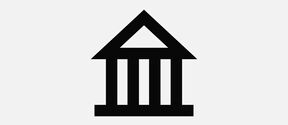Support for Teaching - Learning Services at the School of Arts, Design and Architecture
Learning services arranges regular orientations for the new teachers.

This section includes important information concerning your employment contract and beginning of employment.
Please discuss possible travel costs and other expenses with your supervisor beforehand.
Aalto University is committed to promoting equality, diversity, inclusion and non-discrimination in all its activities. We aim to provide a non-discriminatory, gender-equal and accessible environment in which employees and students with diverse backgrounds and duties receive equal treatment and are free to participate without discrimination in university activities.

This section includes the most important points about teaching in the perspective of the hourly-based teacher.
Following attendance: It is recommended that the requirements for attendance and course completion is described as precisely as possible in the course description or syllabus. When the principles are clearly outlined, the teacher can rely on these if a student should prove their absence with a medical certificate or reject the course based on absences. Describing this information is the responsibility of the teacher in charge, and the hourly based teacher follows the attendance.
It can be defined in the course description if the courses have an 80% attendance requirement, for example, or if a breach of attendance leads directly to the rejection of the course. You can describe in the course description or syllabus when the student is considered to have left the course and the performance has been rejected.
If the presence requirement or percentage is not defined, the amount of student attendance should not affect the pass or grade. The course grade is determined by how the student has achieved the set learning outcomes.
In principle, the teacher is not obliged to carry out additional tasks to compensate for absences. Students will find out the tasks they have done on the course during their absence (for example, from MyCourses or classmates). In the case of long sick leave, the teacher can ask a student to send their medical certificate to Learning services: confidential-arts@aalto.fi. Learning services will check the certificate and inform the relevant teacher. If the student's absence from sick leave is prolonged, the teacher must be consulted.
Studies have shown that learning is most effective when students actively produce and process information. Similarly, the most ineffective learning is the passive reception of knowledge and learning by rote. The recommendation is to make use of pedagogics that activates students, for example, lecture diaries, group work, studies, or tasks which combine theory and practice.
You can utilise the "Get inspired! A guide to successful teaching" to support the design and implementation of the teaching.
Aalto offers pedagogical training, explore opportunities.
You have several options to learn more about teaching at Aalto ARTS:

Learning services arranges regular orientations for the new teachers.

A landing page for teachers to help them find information, services, and support related to teaching and learning.

Basic information about Aalto's core information system for teaching and studying.
Information on registering to courses at Aalto ARTS and the order of priority.

At the School of Arts, Design and Architecture, hands-on learning is essential. Our students have access to one of the finest workshop environment in the world, with a very high workshop to student ratio.

This page contains practical instructions on curriculum design and the implementation of teaching. The guidelines are based on the current legislation and the Aalto University rules and regulations concerning teaching and studying. The purpose of these guidelines is to support teachers in curriculum design and in the practical arrangements for course implementations.
You can find the laws and regulations referred to and as well as the rules and regulations issued by Aalto University at the end of this document.
Teaching services is responsible for the curriculum design process, pedagogical support, support for masters thesis process, teaching demonstration assessments (Educational board), Tongji - commissioned education, teacher orientation and course feedback.
You can reach us all by sending email to arts-les@aalto.fi.